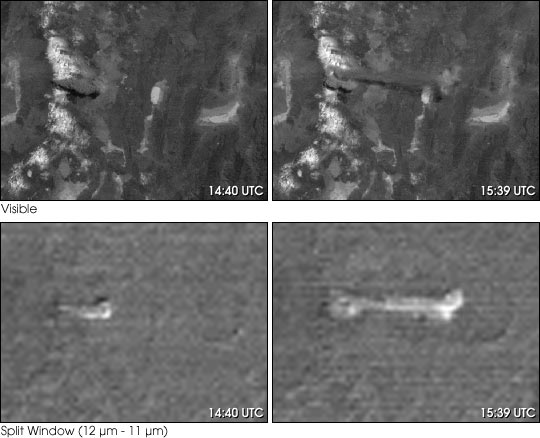


Lascar volcano, in northern Chile, erupted on July 20, 2000, sending ash 40,000 feet into the air. These images from the NOAA Geostationary Operational Environmental Satellite (GOES) show the ash cloud as it blew east.
The top images use the GOES visible light band. The dark ash cloud does not stand out well from the Earth’s surface. To enhance the appearance of the ash cloud, we compared the two GOES thermal infrared channels in the bottom images (called the split window technique). Silcate particles in the ash cloud absorb more 11 µm radiation than 12 µm radiation, so the ash is emphasized when one channel is subtracted from the other. This technique is especially useful in overcast conditions, because water droplets and ice crystals absorb less in the 11 µm channel than the 12 micro;m channel.
Image by Marit Jentoft-Nilsen, NASA GSFC Visualization Analysis Lab, based on data provided by NOAA.